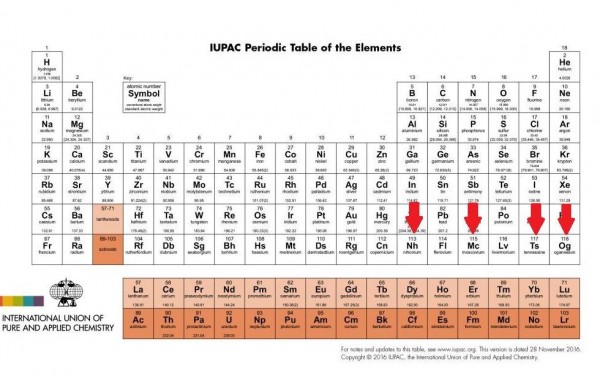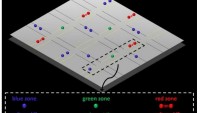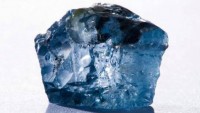IUPAC Announces Names and Symbols for Newest Periodic Table of Elements 113, 115, 117, 118
| Arthur Dominic Villasanta | | Dec 05, 2016 06:15 AM EST |
(Photo : IUPAC) The updated Table of Elements as of Dec. 2016.
Four man-made superheavy elements have received their official names from the International Union of Pure and Applied Chemistry (IUPAC), an international federation of chemists best known for its works standardizing nomenclature in chemistry and other fields of science.
IUPAC approved the following official names and symbols for four elements after a five-month period of public review:
Like Us on Facebook
* Nihonium and symbol Nh, for the element 113,
* Moscovium and symbol Mc, for the element 115,
* Tennessine and symbol Ts, for the element 117 and
* Oganesson and symbol Og, for the element 118.
There were 63 elements in the periodic table when it was first published in 1869 by Russian chemist Dmitri Mendeleev.
IUPAC said that in keeping with tradition, the newly discovered elements were named after a place or geographical region, or a scientist.
The ending of the names also reflects and maintains historical and chemical consistency: "-ium" for elements 113 and 115 and as for all new elements of groups 1 to 16; "-ine" for element 117 and belonging to group 17 and "-on" for element 118 element belonging to group 18.
The recommendations will be published in the IUPAC journal Pure and Applied Chemistry.
The name nihonium with the symbol Nh for element 113 was proposed by the discoverers at RIKEN Nishina Center for Accelerator-Based Science (Japan). The name comes from Nihon, which is one of the two words for "Japan" in Japanese. Nihon literally means "the Land of Rising Sun".
Moscovium with the symbol Mc for element 115 and tennessine with the symbol Ts for element 117 were proposed by the discoverers at the Joint Institute for Nuclear Research, Dubna (Russia); Oak Ridge National Laboratory (USA); Vanderbilt University (USA) and Lawrence Livermore National Laboratory (USA).
Both are in line with the tradition honoring a place or geographical region. Moscovium is in recognition of the Moscow region and honors the ancient Russian land that is the home of the Joint Institute for Nuclear Research, where the discovery experiments were conducted using the Dubna Gas-Filled Recoil Separator in combination with the heavy ion accelerator capabilities of the Flerov Laboratory of Nuclear Reactions.
Tennessine is in recognition of the contribution of the Tennessee region of the United States, including Oak Ridge National Laboratory, Vanderbilt University and the University of Tennessee at Knoxville, to superheavy element research.
And in line with the tradition of honoring a scientist, the name oganesson and symbol Og for element 118 recognizes Professor Yuri Oganessian (born 1933) for his pioneering contributions to transactinoid elements research.
The name was proposed by the collaborating teams of discoverers at the Joint Institute for Nuclear Research, Dubna (Russia) and Lawrence Livermore National Laboratory (USA).
"The names of the new elements reflect the realities of our present time" said IUPAC President Prof. Natalia Tarasova, and celebrates the "universality of science, honoring places from three continents, where the elements have been discovered -- Japan, Russia, the United States -- and the pivotal role of human capital in the development of science, honoring an outstanding scientist -- Professor Yuri Oganessian."
Tagselements, superheavy elements, International Union of Pure and Applied Chemistry, Nihonium, Nh, Moscovium, Mc, Tennessine, Ts, Oganesson, Og
©2015 Chinatopix All rights reserved. Do not reproduce without permission
EDITOR'S PICKS
-

Did the Trump administration just announce plans for a trade war with ‘hostile’ China and Russia?
-

US Senate passes Taiwan travel bill slammed by China
-

As Yan Sihong’s family grieves, here are other Chinese students who went missing abroad. Some have never been found
-

Beijing blasts Western critics who ‘smear China’ with the term sharp power
-

China Envoy Seeks to Defuse Tensions With U.S. as a Trade War Brews
-

Singapore's Deputy PM Provides Bitcoin Vote of Confidence Amid China's Blanket Bans
-

China warns investors over risks in overseas virtual currency trading
-

Chinese government most trustworthy: survey
-

Kashima Antlers On Course For Back-To-Back Titles
MOST POPULAR
LATEST NEWS
Zhou Yongkang: China's Former Security Chief Sentenced to Life in Prison

China's former Chief of the Ministry of Public Security, Zhou Yongkang, has been given a life sentence after he was found guilty of abusing his office, bribery and deliberately ... Full Article
TRENDING STORY

China Pork Prices Expected to Stabilize As The Supplies Recover

Elephone P9000 Smartphone is now on Sale on Amazon India

There's a Big Chance Cliffhangers Won't Still Be Resolved When Grey's Anatomy Season 13 Returns

Supreme Court Ruled on Samsung vs Apple Dispute for Patent Infringement

Microsoft Surface Pro 5 Rumors and Release Date: What is the Latest?













